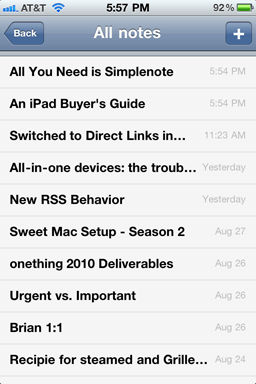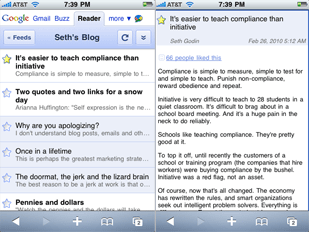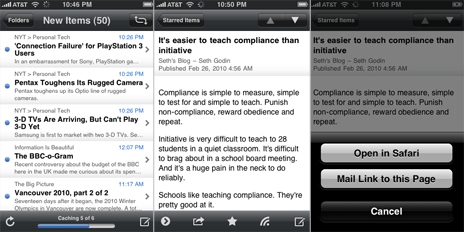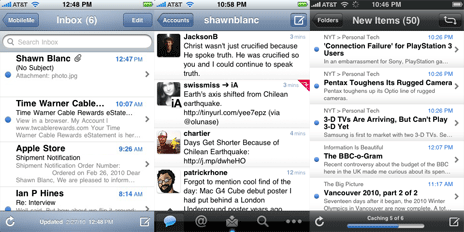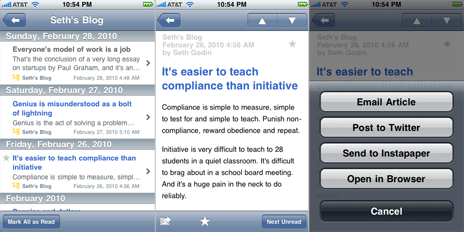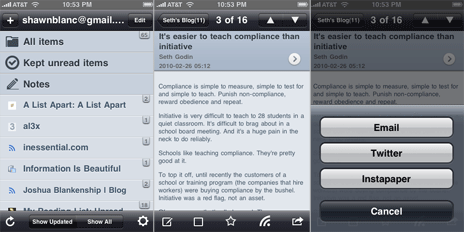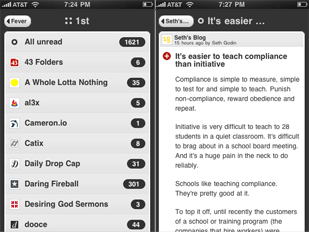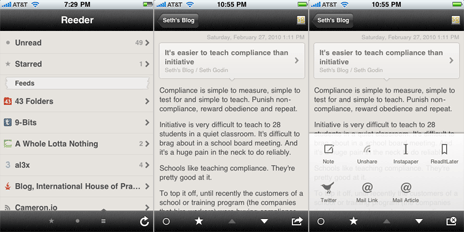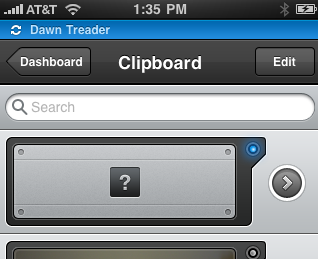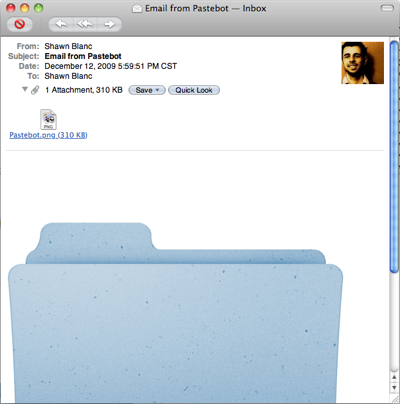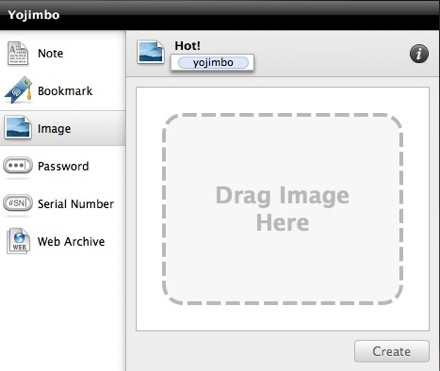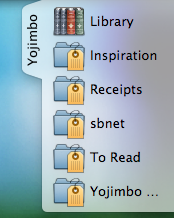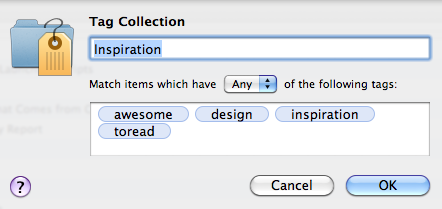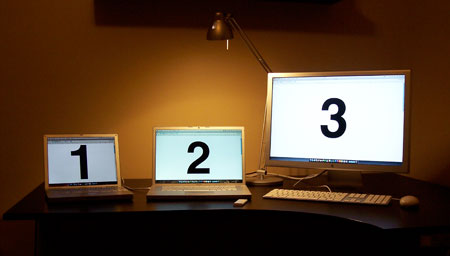How many task-management apps have you used in the past six months?
Finding that single piece of software which does exactly what we need when we ourselves don’t actually know what it is we need can be a pain. It’s a Tinkerfest.
Task-management apps are multiplying faster than you can say “get this done.”1 And the nerds that use them are moving to each new release in hopes of relieving the clutter and stress that is their life. It’s also a Switcherfest.
I don’t think the new spins on productivity software are because we have yet to witness the creation of the Ultimate App and Workflow. These unique and diverse apps are being written because people are unique and diverse.
Each of us has our own way of dealing with responsibility and our own expression of productivity. Tinkering and then switching is usually not the fault of the software. We’re not looking for the best app, but rather the best app for us.
Chris Bowler wrote, “One cost of consistent tinkering is that you never spend the time digging deeper in an application.”
I am not a GTD guru, but I do take being organized seriously. I have been using Cultured Code’s task-management apps, Things, for quite a while, and I have had nothing but fantastic user experiences and have witnessed un-anticipated scalability.
Also I am an evangelist of great software. If I have to use it all day every day it had better not be crap. And Things is not crap.
I Used to Just Worry About my Comic Book Collection
When I was a kid my cousin used to visit every summer, and our first job was working at a greenhouse.
It was my parent’s greenhouse so Nate and I got paid a very generous four dollars-per-hour. In cash (we didn’t have bank accounts), which was convenient so we could leave immediately after work to buy comic books and rare coins.
In those younger days we had just two things to be responsible for: (1) Be to work by 9:00, and (2) keep out of trouble the rest of the time.
Wow. It’s not like that anymore. But I wouldn’t want it to be…
In Benjamin Franklin’s autobiography, he says, “When men are employed, they are best contented; for on the days they worked they were good-natured and cheerful, and, with the consciousness of having done a good day’s work, they spent the evening jollily; but on our idle days they were mutinous and quarrelsome.”
Having responsibility can be fantastic. When there is a job that needs accomplishing, it makes a person want to get out of bed in the morning. It’s good for the soul.
When you are in charge of your own self, there are many things that need to get done simply to keep up with the pace of life. It’s not the same as when you were 12. It’s also not the same for every person.
Some people only need 10 minutes in the morning with a cup of java, a pen and a piece of scratch paper. They think for a moment, then they jot down all that needs to be done that day. And that’s the end of it.
For others of us the things we place on our to-do list carry all sorts of intricate details. We don’t live our life one day’s to-do list at a time. We have multiple projects, jobs, and responsibilities all spinning at once. They span over weeks, months, and years. They involve multiple people and multiple areas of life.
A system for Getting Things Done is much more than just a place to dump the multitude of tasks and responsibilities as opposed to absorbing them until you explode. David Allen knew that responsibility is good for you but that it can also totally stress you out. But with a cool head, a good tool, and some focus, you too can live a stress-free and productive life.
Things
Things came on the scene when Version 0.8a was released as a private alpha to 12,000 users on December 10, 2007. It later went public beta, until the spit-and-polished version 1.0 was released at Macworld on the 6th of January 2009, and went on to win the Macworld Best of Show award.
If you missed some of the development process of Things along its journey, I highly recommend you read through Cultured Code’s weblog archive. Some fantastic stories of how key features came about (such as the repeating task dialog box, or the iPhone app’s UI). And if you really want to geek out, you can peruse the release notes for versions 0.8a right on up to the latest.
Something that makes Things such a great task management tool is that it seamlessly scales to suit any person’s productivity.
From his interview with MacApper, Jürgen Schweizer, the president of Cultured Code says:
Right from the beginning we wanted to create a tool that was easy to pick up yet powerful. It is no exaggeration, with Things it is possible to manage thousands of to-dos, but Things is also the application with the most modest learning curve.
Things not only scales horizontally — working transparently for the light GTDer and the guru alike. It also scales vertically, easily allowing you to create massively-long lists, multiple projects and detailed notes. Or, if you prefer, very few.
When I first began using Things, I only had a handful of to-do items each day. I had no projects and only a few areas of responsibility.
Currently I have 8 projects, 6 areas of responsibility and close to 100 individual to-do items logged. 16 of the to-do items are in my Today list and there is one straggler task waiting in my Inbox.
As my dependance on Things has increased over the months, I have yet to hit a learning curve. Not once did I stop and reassess what the heck I was doing with the thing. It just flowed. And it’s as helpful and organized for me now as it was when I had much less to do.
The reason I’ve grown so fond of Things is that it helps me to set it and forget it.
A Forgetful Task App
For better or for worse, I am a naturally organized person, and my brain is always thinking things through. Which means I don’t very much want a task management app for the sake of remembering something, but rather for the sake of forgetting it.
I need a place to dump all the ideas, projects and to-do items that come my way so I can happily live in the here-and-now rather than in the what’s-to-come. And Things’ ability to handle vast amounts of tasks while keeping them in order with lists and notes is better than any other app I’ve used.
Since I am always thinking things through, the most important feature for me has to be an easy and ubiquitous way to input my thoughts. This is common practice for productivity, so Things isn’t breaking the mold here. But the way it helps you capture your thoughts are smart and out of the way.
On the desktop version there is the HUD interface. Like Quicksilver, the HUD can be brought up at any time, in any application, via a keyboard shortcut (so long as Things is running in the Dock).

On the iPhone version there is a plus (+) symbol that lives in the bottom left-hand corner at all times (unless the on-screen keyboard is active). Regardless of what screen you are, on adding a new task is only a tap away.

Both of these core features shout, you can jot down that pesky to-do at any moment it strikes your mind.
Notice how these two identical features have a completely different implementation? It’s a testimony to how well each individual app was thought through and developed. Not only are the two applications parallel to one another, they also hold their own as individual apps and are best-of-breed for their respective platform. But more on that later.
Ubiquitous capture is a great start, but it is just the start. Things also needs to work with me as I process and organize those tasks.
Using Things
Other than the quickies, entering in a task usually involves three parts:
- The Task Title. No rules. I jot down whatever is on my mind so I can get it out of my mind.
- Task Notes. Many of my daily responsibilities revolve around sending and replying to emails, so I get a lot of action items via my email inbox. Often there are files attached to the email, or other valuable info which may be relevant for when I get to that task. The email gets linked in the ‘Notes’ box of the task, and then moved to the Action folder in Mail.Links to email are dynamic, so if you drop the email link into Things while the email is in your Inbox, but then you move it to another folder, the link in Things follows the email. Even to the trash.
- Due Dates. I don’t want to leave all upcoming projects in the Inbox, nor do I want them in the ‘Today’ view. But it can be easy for a few important tasks to get lost in the sea of all the other tasks. Especially if it’s not related to a current project.I usually assign a due date to the task and then drop it into its area of responsibility or the project it belongs with.
If it’s a loner task, I pick the due date based on my schedule and current priorities for my job. There are a few times in my week that I have large chunks of time blocked out with no set agenda. These are my “Open Work Times” and they are when I work on my to-do list. Usually.
By setting due dates, I know that my own computer will bring the task back to my attention by shooting it into the “Today” list at its appointed time. And if the task becomes a priority before the due date I gave it, I have no doubt someone will be sure to let me know.
The elephant in the room that I continue to ignore is tags. Not because I don’t see the use for them, but because I never felt that bothering with them on the front end would prove useful to me on the back end.2
Using tags in Things could make a lot of sense if my day was constructed in such a way that I could sit down at my desk for 30 minutes with a single focus of, say, returning phone calls. In this situation bringing up all the tasks pinned with the ‘Phone’ tag (ha!) would be genius. But I don’t work that way in real life. So I don’t bother with tags.
One way I might see myself using tags for would be to mark priority. However, priorities are relative. What may be a priority today, may not be a priority tomorrow. And vice-a-versa. Thus, I rest my case.
Quick Entry HUD
About 90% of my tasks get put into Things via the quick entry HUD; even when Things is the forefront window already.
I have the keyboard shortcut set as SHIFT+COMMAND+SPACE. Since it’s the second most used keyboard shortcut for me I set it to be nearly identical to Quicksilver’s (CMD+SPACE), which is the first.
Inbox Management
I don’t worry about keeping my Things inbox at zero.
There are rarely more than a handful of tasks sitting there at any given time, and it’s usually because I don’t have a spot to put them yet. Or because it has been a long day.
Usually they are not something to be done today and just need some info and a due date before I slot them into a current project or area of responsibility (both of which will also add the task to the master ‘Next’ list).
If it is a very contrite task it gets left as-is and put into the ‘Someday’ list. About once a week I peruse through the ‘Next’ and ‘Someday’ lists to see if anything needs doing. I usually take care of one or two tasks just to feel good about myself.
This process is nearly the exact same way Chris Bowler cranks through his Inbox as well:
The great feature that I feel separates Things from other task management applications is the differentiation between projects and areas (areas of responsibility). I receive a lot of tasks that are not projects. And they fall under one of my areas I am responsible for. Things makes this a real ease and pleasure to document.
Seventy percent of the time I add items to Things, it is done through the Quick Entry panel and added to the Inbox. So I usually organize these tasks once a day, near the end of the day. Tasks are dragged to specific areas or added to existing projects. And when needed, new projects are created.
Moreover, when processing a task there is a clever feature which comes in handy if the task you wrote down should have been a project. By dragging a task out of its list, into the sidebar and dropping it over “Projects” will take the name of the task and create a new project automatically.
This is very handy feature indeed. Especially if you’ve created a single task which you realize may need to be broken down into multiple, smaller tasks…
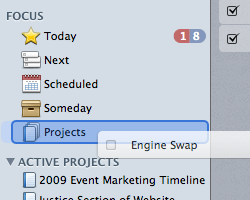
Projects
Benjamin Franklin, a productivity and time-management mastermind, said, “Little strokes, fell great oaks.”
When building a task-list for a project, keep each task bite-sized. Each task should be something with a clear and tangible goal, helping lead to the end of the completed project. A good comparison is a tried-and-true technique my father-in-law teaches for those seeking to get out of debt — technique Dave Ramsey refers to as the “Debt Snowball”.
You gather all your debts, and put them in order of amount owed. Nothing else. While paying the minimum on all current debts, you focus all extra money to pay off the debt with the smallest balance first. Once that debt is paid, you take the left-over money you’re not putting towards it and apply it to the next smallest. And so on until all your debts have been paid.
It’s great financial advice, and it has practical application in other projects beyond financial.
Breaking down a project into easily definable steps (“little strokes”), you are able to work with focus on a single goal at a time. Procrastination is easier to avoid when there is no ambiguity, which makes completing the project (“great oak”) on time with less stress a reality.
Printing a List
To keep the memory of old-fashioned lists alive, Things offers the ability to print your to-do list.
This can actually be very helpful if a project has multiple to-do items that need to be reviewed with your team and then farmed off to the poor sap who decided to sit in the corner.
Unfortunately, the printed version of a task list doesn’t look nearly as pretty as the screen version. Though I don’t want (or even expect) all the fancy UI elements to print out, I do want the list to be well-formatted. A cleaner layout, use of a serif and more white space would be a good start.
Things on iPhone
I use both versions of Things, and am very impressed at how much the two apps work and feel identical to one another. This may seem like a “well duh” observation, but think about the back-room thought that had to go into developing the iPhone version of Things.
When creating an iPhone version of a desktop app you can’t just drag and drop the code and click the “iPhoneitize This” button. You have to completely start from scratch. In this situation, the result was a fine-tuned, highly polished iPhone app which doubles as a fully functional, stand alone GTD tool. Not bad for one month’s worth of work.3
Those who use both the desktop and the iPhone version may not have considered that the iPhone version of Things had to hold its own since many of its users do not own a Mac or do not use Things on their desktop.
There are two dynamics to successfully building two versions of the same app onto two unique platforms (one for iPhone and one for the Mac).
- Both apps need to feel native on their respective platform. The iPhone version needs to feel like it belongs on the iPhone app, and the desktop version needs to feel like it belongs there.This doesn’t just mean the GUI should be different. It also means the layout and display of core functionality, along with the flow of navigation and the user interaction within the application all have to pull together to form a well developed iPhone app that still has striking familiarity to its desktop counterpart.
It’s like the difference between Clue the board game, and Clue the card game. Same game, completely different implementation and interaction.
- Both apps need to feel like they are the same app. Meaning, the Cultured Code team had to reconcile the two-fold need for their iPhone version of Things to feel like a native iPhone app while also feeling like the very same application they made for the desktop.
Reconciling these goals was the same issue Apple had to tackle with their own programs such as iCal or Mail. iPhone’s Calendar app feels great all by itself. But if you use iCal on you Mac as well, you don’t feel like you’re working with two different programs. They are simultaneously the same and different.
And Cultured Code did it…
The desktop version of Things is very much Macintosh-esque. A great piece of software in terms of functionality and design. Mac users have high standards for their software beyond just that they work.
Similarly, the iPhone version of Things is very iPhone-y. All the functionality of a fully loaded task management app married to the ease of use of what feels like a native iPhone app.
In and Out
Things on the iPhone is only about as good as it is fast.
The sheer virtue that Things for iPhone is an app used on a mobile device means it will be used mostly by people when they are on the go. This is why the ability to create a new task from anywhere in the app is so important.
Something clever with Things on iPhone is that the “plus” (+) icon is dynamic. Meaning if you open up the task entry screen from the main window, the default location for that new task is the Inbox. But if you are working within an area of focus and tap the “plus”, then the default location for that new task is your current area of focus.
What I also like about adding new tasks to Things on the iPhone is that the keyboard slides up automatically and instantly, when the “New To Do” screen is launched. Though unfortunately it is not quite as refined as Mail on the iPhone where after tapping to create a new email message the on-screen keyboard slides up at the very same time as the blank email.
If you want to add a new task to a particular list or area of focus rather than the Inbox it is best to tap into the list you want to add the new task to first, and then create the task. Rather than creating the new task from the main screen and then selecting your desired location.
Choosing to create a new task from the home screen that you want to end up in the “Someday” list, the order would go something like this: (1) Tap the plus to invoke the New To Do window; (2) type in the task name; (3) tap the “Create In” box; (4) select from the lists, and finally; (5) Save.
That’s five total taps, not including the amount of letters and spaces in your task’s title.
If you add the new to-do from the already appropriate list you save yourself one tap: (1) Select list; (2) tap the plus symbol; (3) type in task name; (4) save.
Ubiquitous
I do not use Things on my iPhone to manage my shopping list when out on errands. I use it almost exclusively as my parking lot. Regardless if I’m in a meeting, at Wal-Mart, or waiting for the oil to be changed, there is no way to tell when a thought will pop into my head. When it does, I need a place to drop it.
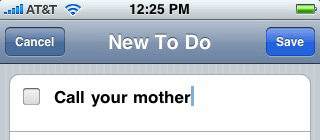
I used to jot those thoughts onto the palm of my hand.
Then I bought a Palm Pilot. Then a pocket Moleskine, then a notepad. But through all that, the only thing I ever had with me all the time was my cell phone. I’ve had a mobile device of some sort ever since my first pager in 7th grade. It’s 2nd nature to check my pockets as I walk out the door. Keys. Phone. Wallet. Let’s go.
Once I owned a cell phone that sent emails too, I had two spots to drop my ideas: one was my to-do list manager of choice at the time, and if that wasn’t handy I would send myself an email. Then later, the email would get turned into a to-do item.
Though I originally bought Things for my iPhone based on the novelty of having a to-do list app that worked on both platforms and would sync between the two, I have found that I rarely use its full features. It has primarily become my input collector, which I then just sync to my Mac.
Syncing
To sync Things on your iPhone with Things on your desktop simply make sure they are both on the same wireless network, then launch them both. If they have not yet been paired, a you’ll be asked to enter a 4-digit pin onto your phone. It is a cinch to set up and virtually no trouble at all to keep the two in unity.
When a sync is in progress your iPhone goes into “don’t touch me I’m syncing” mode, with a large black screen and a spinning “ticker-wheel”. At the same time, on the Mac, this progress bar appears:

If you want to force a sync, simply open the preferences pane on the desktop version, select iPhone and click “Sync Now”.
I find it interesting that the only way to sync Things’ iPhone library to the desktop’s is through a wireless network. You can’t plug it in to sync, and there is no cloud server offering over-the-air syncing like MobileMe does.
If you are not near a wireless network, you can still sync by using your computer’s airport card to create a network. Click the airport menu icon, and choose “Create Network…” Then join that network on your iPhone, via the Wi-Fi menu under Settings.
Additionally, Things does not currently sync between two desktop Macs. Trying to use the iPhone as a mediator or carrier of info between two computers is doable, since each Mac must be paired to the iPhone individually for over-network syncing.
Since I only use one computer, this is not an issue for me. But for those of you who do use multiple Macs, Cultured Code has documented a work-around which uses Dropbox to keep your Things library in sync, and which many people seem to be doing successfully.
More Reviews
This is just one of a handful of winded and entertaining software reviews.
![]()

